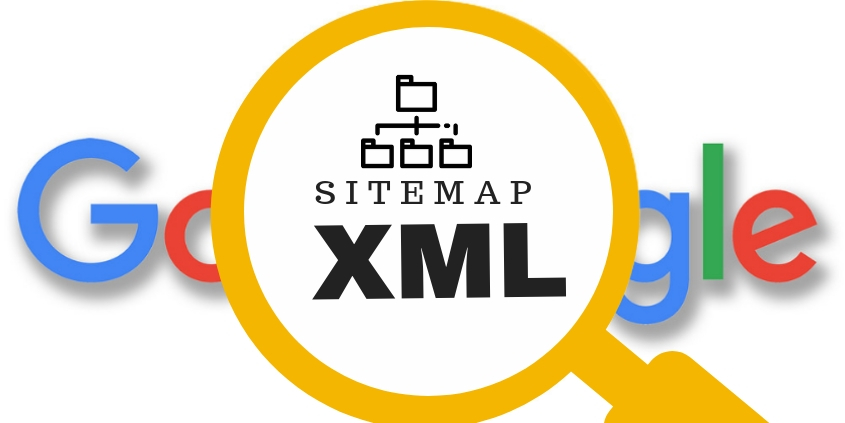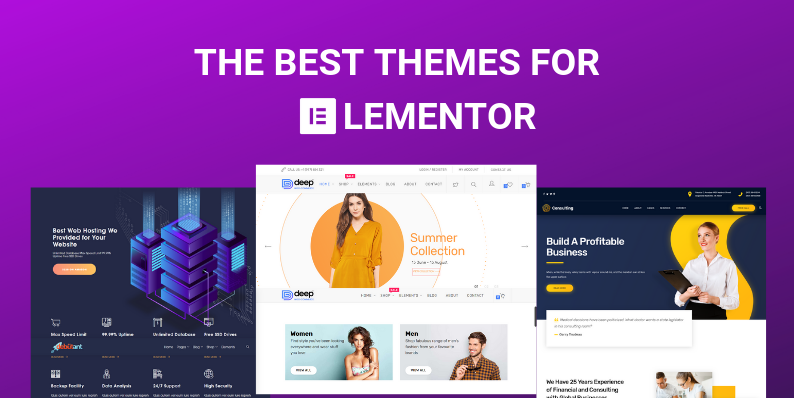If you’ve been searching for a way to horizontally post your blog posts or custom post types with Elementor without using plugins, then you have come to the right place.
In this article, you will learn how we built The Horizontal Scroll Effect On Our Content Page. You will also be able to do it for your own WordPress and Elementor site.
If you are running a content-heavy site like a movie website or any other kind of site where most of your archives need to scroll horizontally, then you might want to place the code in your child theme stylesheet or the style.css file of your child theme. Note that I am saying child theme instead of your theme because you do not want to lose the code every time your theme updates.
How it works?
When you scroll your page normally, all content will move horizontally, creating a horizontal scroll effect. To fill a page with content in Elementor, simply specify in the element settings a list of templates that the plugin will place horizontally.
Step 1 — Add Scroll Navigation functionality
Navigate to the WP Dashboard and open the page to which you want to add the Scroll Navigation functionality in the Elementor page builder.
In Elementor editor locate the sections to which you want to attach the Scroll Navigation pagination dots. Click the “Edit Section” button.
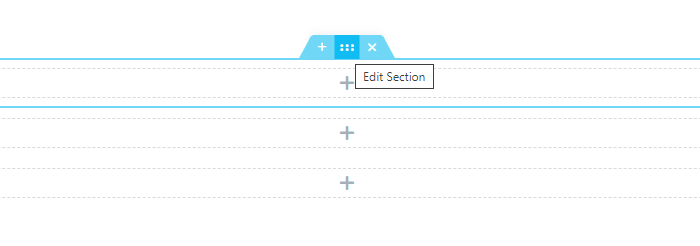
Switch to the Advanced settings tab of the section and input the ID into the CSS ID field.
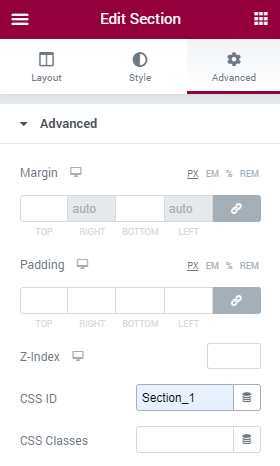
Now, open the Elementor widgets menu, drag the content to the sections, and create the design. Then, find the Scroll Navigation widget in the list of available widgets for Elementor. Drop it above all the sections to which you need to add the pagination dots.
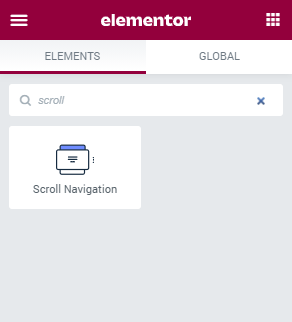
Step 2 — Manage the content
By default, in the Content menu tab of the Scroll Navigation widget, there are three items that are now empty. In case there are more sections on your page, click the “Add Item” button to add a new section. You need to create an item for each of the sections you want to link.

When the number of items satisfies you, it’s time to define the settings.
- Hint Icon. When the user hovers the pointer over the navigation dot – a small hint appears. And here you can choose an icon that will be shown in that hint near the text;
- Dot Icon. To decorate the dots you can place an icon over it. Choose the one in the Icon Library or upload an SVG file;
- Label. This is the text that will be shown in the hint notification window;
- Section Id. Input the CSS IDyou’ve set up for the section here. You have to input the IDs for each of the sections into the corresponding items. Please, make sure the section CSS IDs completely match the IDs you’re adding in the Section ID fields of the items;
- Invert Under This Section. In the Style menu tab, there is a Dots section that has an Invert settings block. If the Invert Under This Section toggle is turned in, the dots design will change according to the settings in the Invert block after the user scrolls it down.
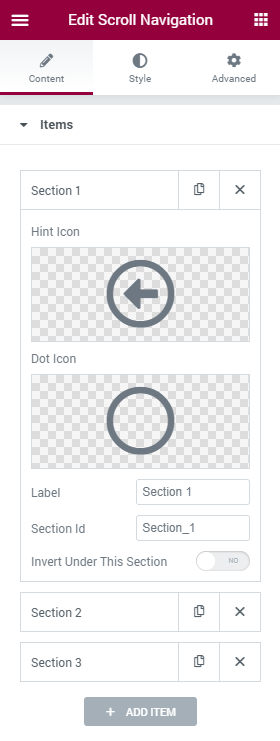
Switch to the Settings section of the Content menu tab in Elementor.
- Position. In this drop-down menu, you can choose the position of the navigation dots. they can be shown to the left and to the right;
- Scroll Speed. When the user scrolls the page that has Scroll Navigation functionality and the Section Switch toggle is enabled, the current section is automatically scrolled down to the next one. In the Scroll Speed field you can choose how quickly that will be performed;
- Scroll Offset. When the section is automatically scrolled down, the widget places the top side of the next section on the top of the screen. The number you place to the Scroll Offset field defines the offset from the top of the screen;
- Section Switch. This toggle enables the automatically scrolling of the sections. The user moves the mouse wheel just a little, and the section is scrolled down. You can also enable that function for the mobile devices and the sections will be scrolled with just a single swipe;
- Show Type. In this drop-down menu, you will see the two ways of showing the hint. TheShow Active Hint means the hint will be constantly shown. And if you choose Show Hint on Hover, the hint will be displayed only when the user hovers a pointer over it;
- Hide On Desktop, Hide On Tablet, Hade On Mobile. These toggles allow you to decide on what devices to show the hints.
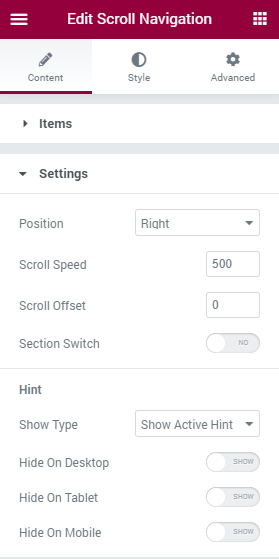
Finally, open the Style settings tab in order to set the background type, use a background image, apply a border, change the appearance of the hints, and labels typography.
When you’ve finished, click the “Update” button to save the changes and check how the effect works on the front-end.
Congrats, you’ve learned how to use the Scroll Navigation widget of the JetElements plugin. Good luck with creating an astonishing design!
Conclusion
The challenge when working with horizontal scrolling is to setup your content with that in mind, one screen of content per section. It is also a good idea to check the content on different device sizes. The layout I used worked fine for desktop and tablet, but would need to be tweaked to look good on mobile.Horizontal scrolling offers a nice alternative to long pages of content and works well for “top ten” lists. Getting horizontal scrolling going using Dynamic Content for Elementor was easy.
If you are interested in Mentor topics, do not miss this great article “Create Custom Elementor Shortcodes For WordPress”
Source :
https://crocoblock.com

